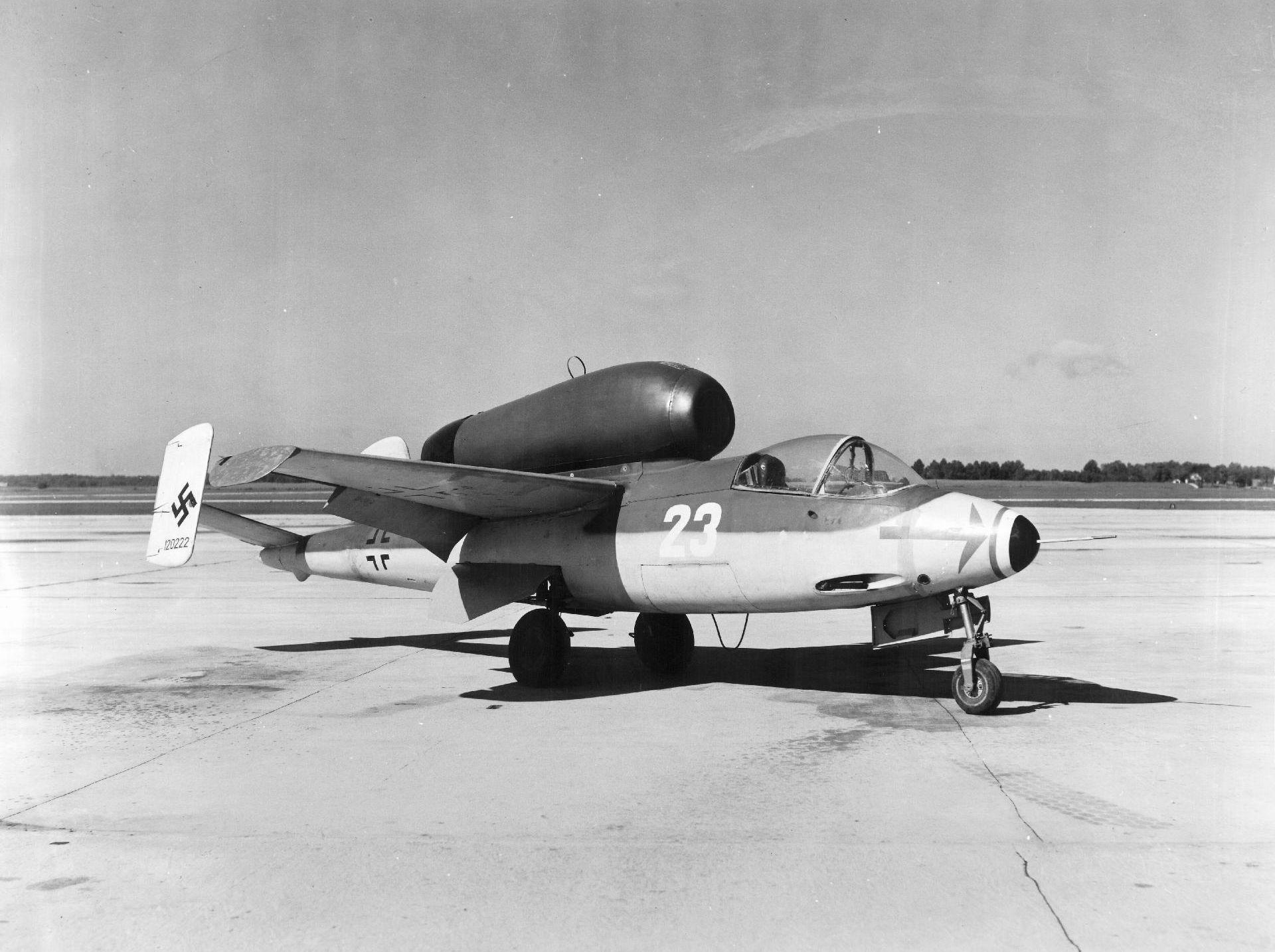By 1943, Germany had lost too many fighters on the battlefield, and it turned out that the Soviet Union and the Allies were able to establish production of reciprocating aircraft, no longer inferior to Messerschmitt Bf.109 and other best Luftwaffe machines. The losses had to be made up urgently, and the Wehrmacht decided to rely on a new generation of aircraft that would be significantly ahead of the Allied aircraft, even if inexperienced pilots were put at the helm. The technical task for the new fighter was formed in September 1944, and in just 3 months the single-engine jet Heinkel He 162 Volksjager was ready for production.
The fighter was made mainly of wood, because in 1944 the German production was catastrophically lacking. The wing was made of wood with plywood, the tail, the rudder of height and turn were made of light alloy, and the keel was also made of wood. The narrow gauge chassis was folded hydraulically and produced mechanically by a spring. The turbojet engine BMW 003E-1 with a thrust of 800 kgf was mounted on top of the fuselage. One of the innovative developments of the He-162 is a catapult seat for the pilot, it was fired from the cockpit with a pyrocartridge.
A total of 320 He 162 aircraft were produced, but officially the Luftwaffe took up only 120 units. Due to the upper location of the engine, the He 162 proved to be very difficult to operate and required long training. As a result, the Nazis simply did not have time to train the required number of pilots. The idea of putting 162 graduates of glider schools in the cabins of He proved to be unfeasible.
Technical characteristics Heinkel He 162
Engine: BMW 003E-1, traction: 800 kg
Weight of empty aircraft, kg: 1664
Take-off weight, kg: 2600
Maximum speed, km / h: 900 (at an altitude of 6000 m)
Lifting speed, m / min: 1150
Practical ceiling, m: 12000
Practical flight range, km: 975